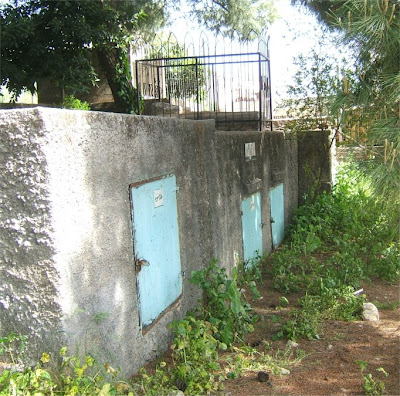The Druze faith is a secretive offshoot of the Ismaili sect in Islam which does not accept converts. While the Druze are culturally and ethnically Arab, their relationship to mainstream Islam is similar to the Mormons' relationship to mainstream Christianity, in that the Druze proclaim themselves to be authentic Muslims, but they are rejected by other Muslims as heretics. The Druze, like all minorities in Arab Muslim countries, were horribly persecuted. The sect itself began in Egypt, but today after evictions and expulsions, they are scattered across Israel, Lebanon, and Syria, and today there are many in Canada and the United States as well. They have a policy of loyalty to whatever state they reside in, regardless of the country's religious affiliation. At the outset of statehood, the Druze allied themselves with Israel's Jews against the invading Muslim armies, and after independence, the Druze leadership arranged mandatory conscription in the Israel Defense Forces.
 Beginning our hike in Beit Jann, this is one of the few opportunities I have, as a Jew, to travel freely in an Arab village. One thing which strikes me here is that, unlike my adventures in East Jerusalem and the Yemenite Village, the street signs and advertisements here are in both Hebrew and Arabic.
Beginning our hike in Beit Jann, this is one of the few opportunities I have, as a Jew, to travel freely in an Arab village. One thing which strikes me here is that, unlike my adventures in East Jerusalem and the Yemenite Village, the street signs and advertisements here are in both Hebrew and Arabic. The post office.
The post office.Independence day having just passed, I'm glad to see friendly (Israeli) flags flying throughout the village, as well as the Druze flag.
One custom I've noticed is the tendency to bury relatives in the front yard, if not the home itself, of the family. Makes it a lot easier to have great grandpa over for dinner.
I would like to learn more about this custom, but the Druze faith is only taught to the initiated of the priestly class. In other words, many of the Druze themselves don't know about their religion. This would never cut it in the western world, where every generation has to relearn its faith and accept it's beliefs anew, but this is the middle east. Religion and family are intricately linked, and concepts like intermarriage or apostasy are almost unheard of. The Druze even have their own dating website, Druzedate.
 Housing in the village. The housing has the same orderless, unplanned, chaotic pattern one sees in Pisgat Ze'ev's neighboring village of Anata, or really anywhere in the Arab world, where building codes and town planning are foreign concepts.
Housing in the village. The housing has the same orderless, unplanned, chaotic pattern one sees in Pisgat Ze'ev's neighboring village of Anata, or really anywhere in the Arab world, where building codes and town planning are foreign concepts. A typical Druze house.
A typical Druze house.In Israel's Mediterranean climate, with intermittent rainfall, pre-modern villages could only sustain themselves in two ways. Some villages, especially in the dryer southern Negev regions, villagers often built cisterns to catch winter rainwater and last over the summer. The village of Beit Jann was built next to a perennial spring. Today, the Israeli water company Mekorot supplies the village with clean water, so the spring now serves merely as an ornament.

 The village of Beit Jann is located smack in the middle of the nature reserve we have come to hike through. With the advent of running water, the village size is no longer restricted to the number of people who can be supported by the spring waters. The high population growth rate combined with the restrictions of land use in the nature reserve is resulting in a good deal of conflict with the state.
The village of Beit Jann is located smack in the middle of the nature reserve we have come to hike through. With the advent of running water, the village size is no longer restricted to the number of people who can be supported by the spring waters. The high population growth rate combined with the restrictions of land use in the nature reserve is resulting in a good deal of conflict with the state.To be continued...












No comments:
Post a Comment